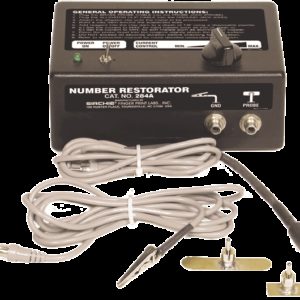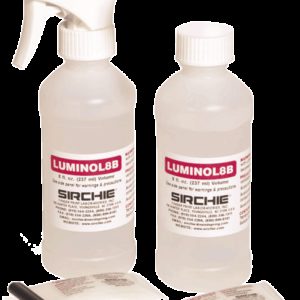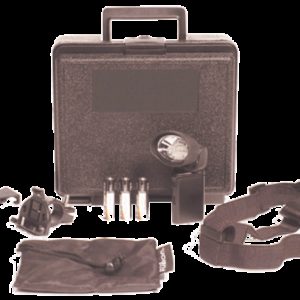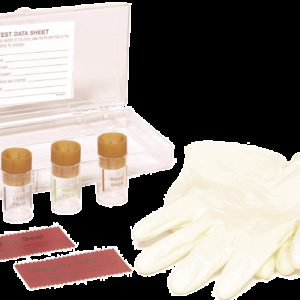Description
The distance of a firearm discharge is an important factor in crime scenes. The close range firing in a suicide, murder or other crime involving firearms can be determined by the detection of powder particles. A study of the scorching, blackening and powder patterns on the object or victim at the crime scene can tell much about the distance and angle of firing. Dark rings around the bullet hole due to abrasion or dirt can be confused with charring and blackening resulting from discharge. Small gunpowder particles, however, may go unnoticed if a sensitive method is not used. Therefore, a chemical test for the nitrite (burned particles) of gunpowder will be very useful in a study of crime scenes involving firearm discharges ” both on the victim and the criminal.
The two-step reaction involved in the formation of orange dye is known as diazotization and coupling. It is this combination of reactions that is specific for nitrite ions. The No. GPD100 kit provides a sensitive and specific method for the detection of nitrite particles at the crime scene. The sensitivity of the test eliminates the possibility of omission and error attending visual examination of the crime scene.
By utilizing this kit, it is possible to distinguish between close-range and distant firearm discharge. Close-range firing and approximate distances can be determined by the powder tattooing on the body or clothing of the victim. After the development of nitrite particles, test paper should be photographed for a permanent record of particle dispersion.
GPD100 CONTENTS:
6- GPD01 Gunpowder Particle Reagent A, 1/6 dram (.6ml)
6- GPD02 Gunpowder Particle Reagent B, 1 oz. (30ml)
12- GPD03 Gunpowder Detection Paper
1- SPU1 Spray Power Unit
12- GPD05 Gunpowder Particle Removers






